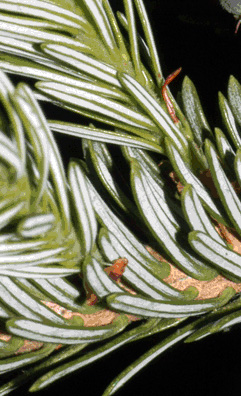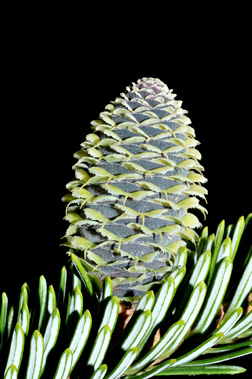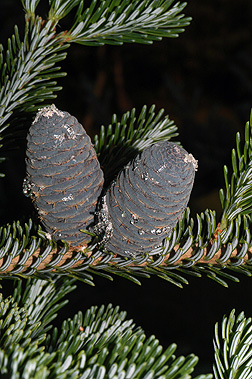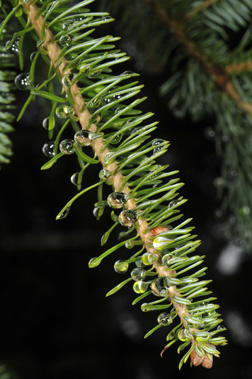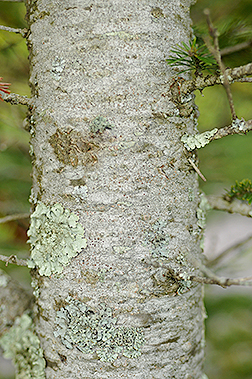 Virginia Tech Dendrology
Virginia Tech Dendrology
Fraser fir Pinaceae Abies
fraseri (Pursh) Poir.
![]()
![]()
![]() symbol: ABFR
symbol: ABFR
Leaf: Flattened needles, 3/4 inch long, blunt or notched at the end, shiny dark green above and silvery below. Needles generally more dense than on the very similar balsam fir.
Flower: Species is monoecious; males yellow to purple; females in upper crown, inconspicuous, purple.
Fruit: Resinous cones are upright, 1 1/2 to 2 1/2 inches long, cylindrical, green to purple, with pointed, toothed bracts protruding from the cone scales; scales are deciduous with seed dispersal in fall.
Twig: Yellow-green, later turning gray; buds round, reddish brown, resinous; leaf scars are flat and rounded.
Bark: Silvery gray-brown, smooth except for resin blisters, largest stems may become a bit scaly.
Form: Fraser fir is a small to medium size tree to 80 feet, with a very narrow, spire-like crown.
Looks like: balsam fir
- white fir
- eastern hemlock
- English yew
Additional Range Information: Abies fraseri is native to North America. Range may be expanded by planting. Download the full-size PDF map.
More Information: Landowner Factsheet
External Links: USDAFS Silvics of North America - USDAFS FEIS Silvics - USDA Plants Database
All material 2025 Virginia Tech Dept. of Forest Resources and Environmental Conservation; Photos and text by: John Seiler, Edward Jensen, Alex Niemiera, and John Peterson; Silvics reprinted from Ag Handbook 654; range map source information
